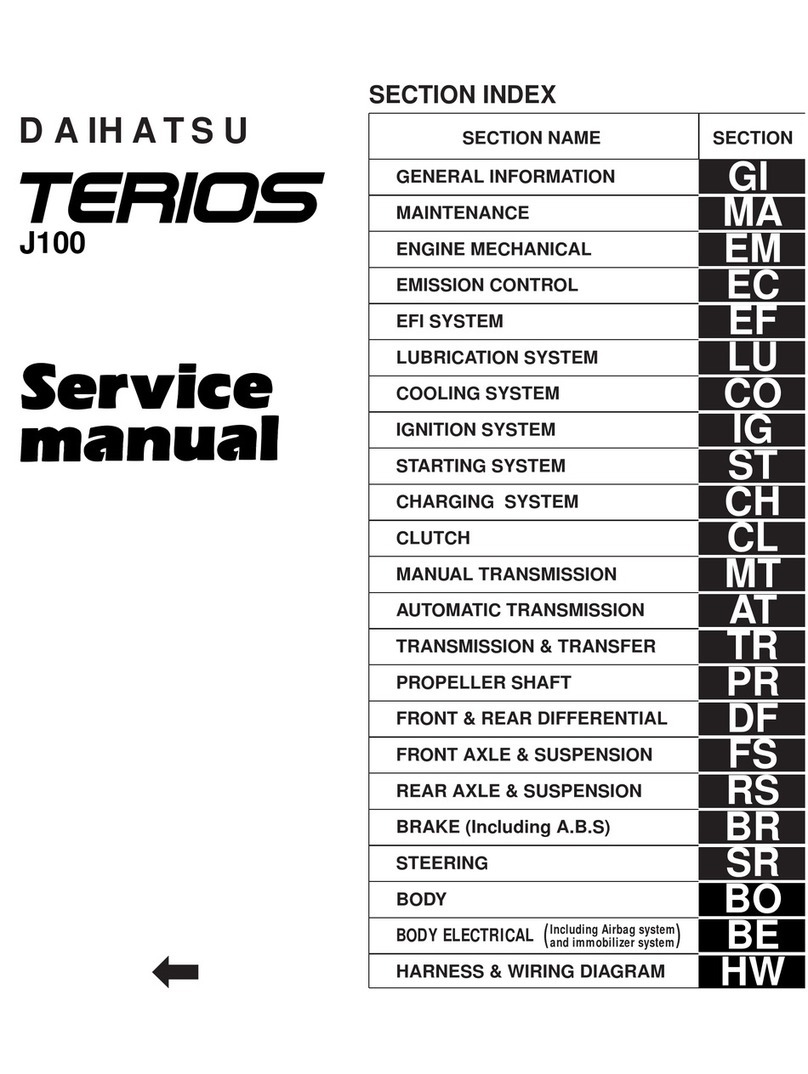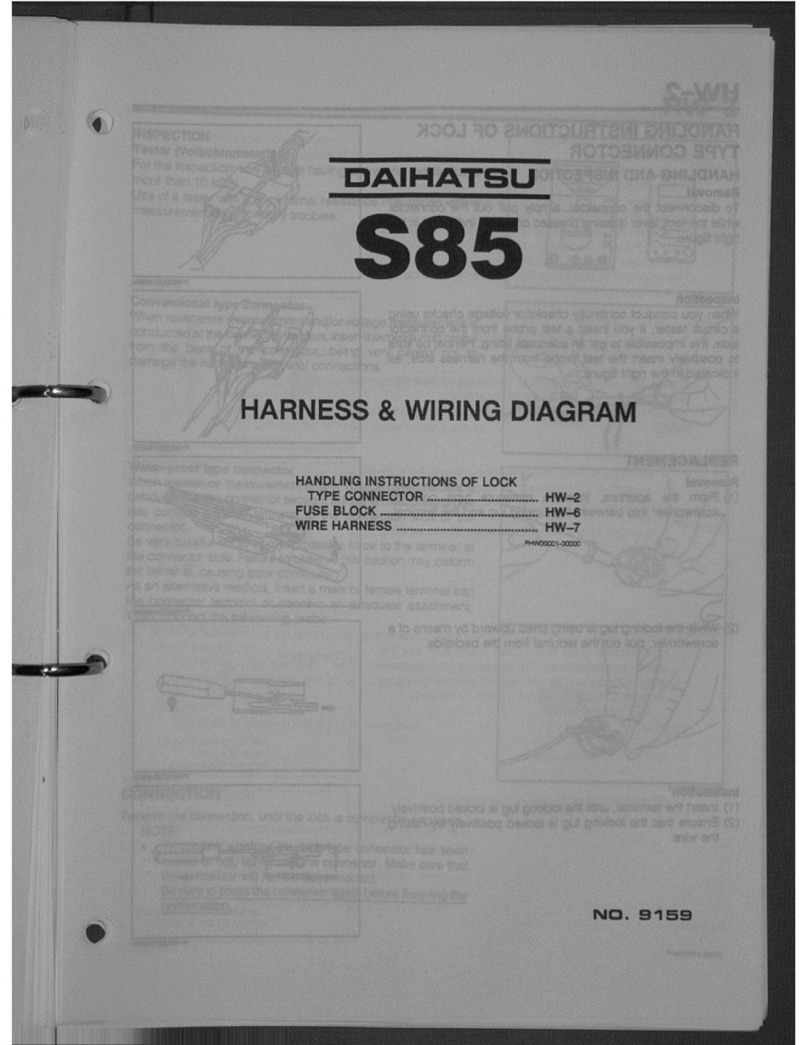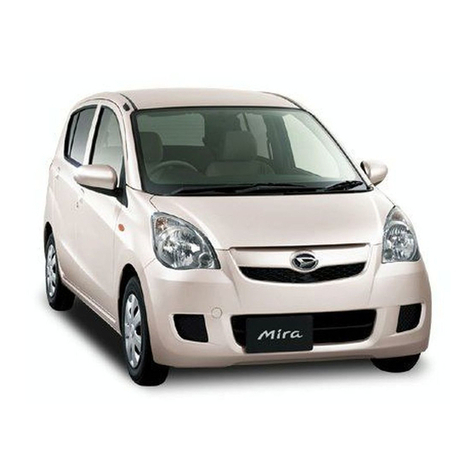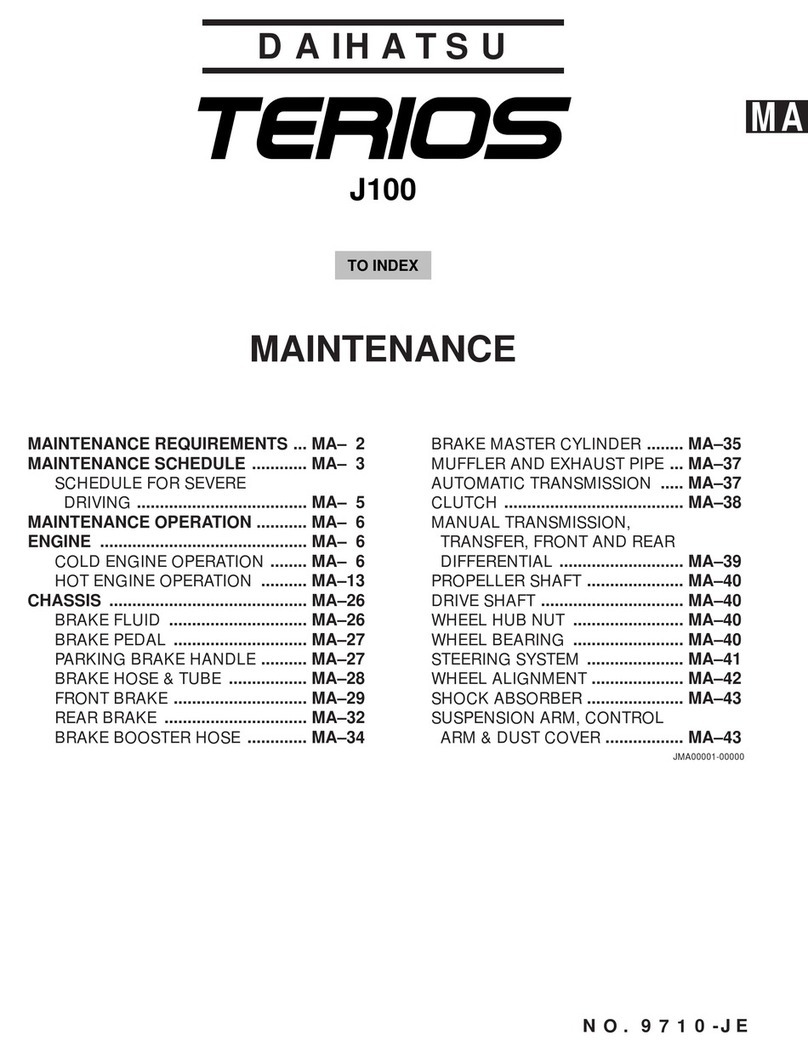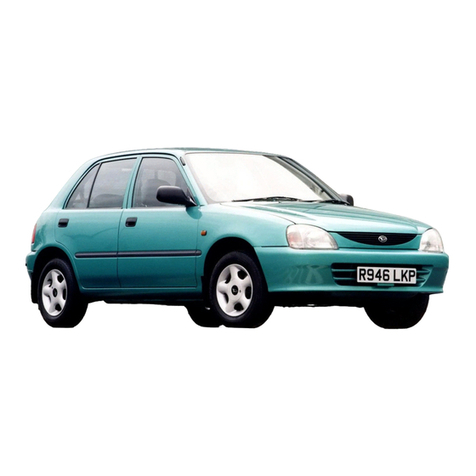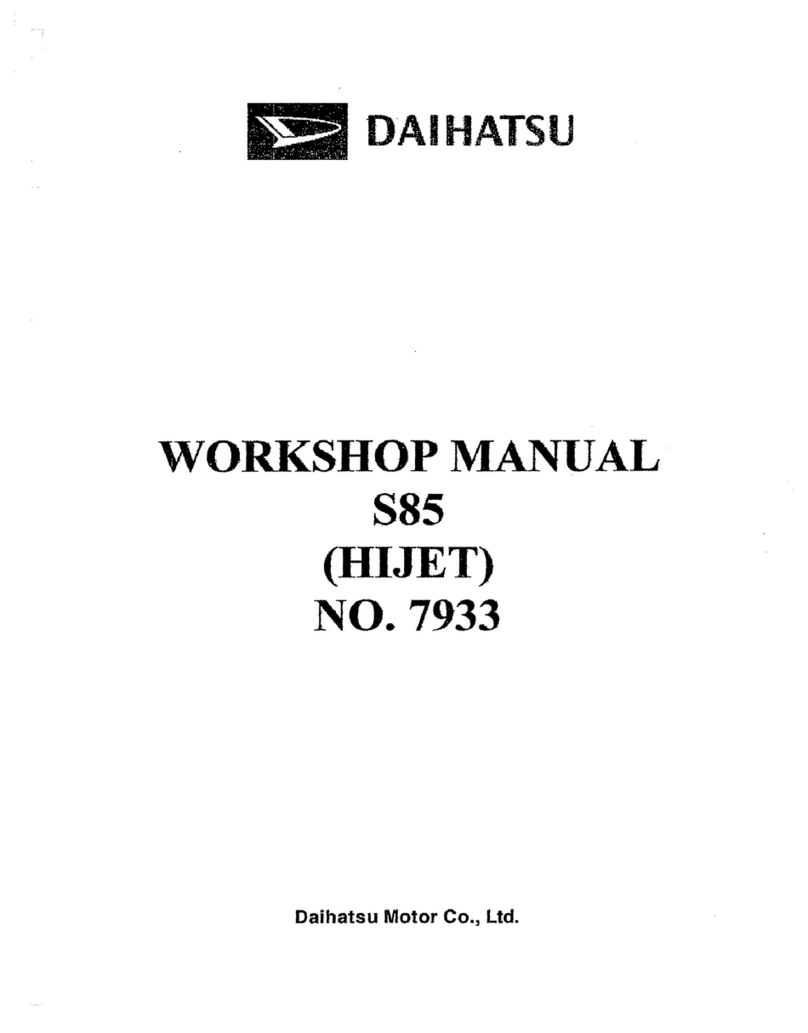•
•
•
•
STARTING SYSTEM
During the starting period, the low-resistance coil provides the solenoid with a large amount of current to
move the shift fork
or
the pinion shaft. Afterward, however, it
is
no longer necessary to use a large amount
of current
to
hold
the
solenoid. Therefore.
the
above-described
circuit is employed in the starting system so
as to prevent burning.
The plunger
of
the solenoid
has
two functions: One
is
to move the shift fork or the pinion shaft. The other is
to close the electric
contact
points,
which
takes place simultaneously with the first function.
For
positive
contact, the contact points are connected
to
the plunger through a spring.
When the ignition switch is
set
to
the start {ST) position, current from the battery goes to the low-resistance
coil, filed coil and armature coils. As a result, the motor start rotating. Simultaneously, the high-resistance
coil
·Is
also energized.
These
two
coils exert a drawing force
on
the plunger, thus making the plunger
overcome the force
of
a
spring
(a
spring which is provided toreturn the plunger and differsfrom theaforesaid
spring provided
at
the
contact
points). The
plunger
then moves the shift fork or the pinion shaft strongly,
thereby making the pinion
gear
mesh with the ring gear. Simultaneously, the starter contact points close and
current is directly
drawn
from the battery.
At
this stage, the low-resistance coil has an equal potential at its
both ends, as previously
described~
Hence, no current flows to the motor through the low-resistance coil.
After the engine has started, when the ignition switch is returned to the lG position, current
to
the solenoid
is
cut
off. (See the NOTE.)
The
spring built in the solenoid returns the plunger, thereby opening the contact
points and cutting the
current
to the motor.
At
the same time, the shift fork orthe pinion shaft which has been
pushing the pinion
gear
returns to the original position
by
meansof the aforesaid spring force. Consequently,
the pinion gear is
disengaged
and separated from the ring gear.
This pinion gear's separation from the ring
gear
can
not
be
performed positively and assuredly
by
the spring
at
the pinion shaft alone.
To
achieve positive separation, a screw-shaped spline
is
provided
at
the pinion
shaft gear. After start
of
the engine, the rotation speed of the ring gearcontinues to increase. Consequently,
it becomes possible
for
the ring gear to
drive
the
pinion gear.
At this point, owing to
the
screw-shaped spline,
the
pinion gear is moved in such a direction that it tends to
disengage from the ring gear. On the other hand, this screw-shaped spline helps the pinion gear to
be
pushed and moved into
mesh
with the ring
gear
during the starting period.
NOTE:
In
fact, at this moment, the current to the solenoid goes to the starter contact points and passes in
series through the low-resistance coil and the high-resistance coil. Consequently, electromagnet
function continues and drawing forces are generated. However, the electromagnetic forces generated
at
the low-resistance and high-resistance coils counteract, for the winding direction
of
the coil is
opposite
to
each other. As a result, no drawing force is produced.
On the other hand,
when
the ignttion switch
is
set
to the ON (ST/ON) position, a parallel circuit
is
formed. The electromagnetic forces generated at both coils are in the same direction, resulting in an
increased drawing force.
Namely, the direction
of
the current
at
the low-resistance coil changes reversely
when
the ignition
switch is switched between the ON and
OFF
sta1es. (This explanation appfies only
to
the instance
when the ignition switch is changed from
the
STposition to
the
IG position.)
ST-7
